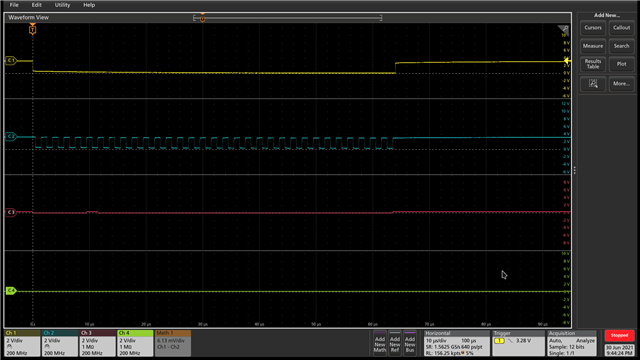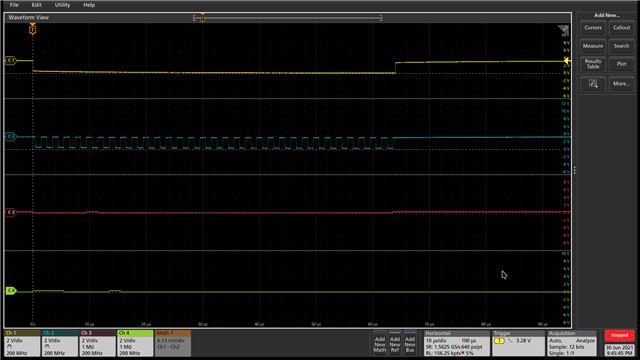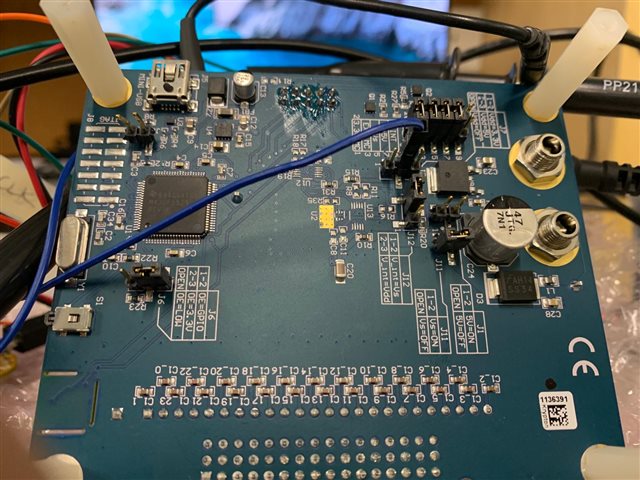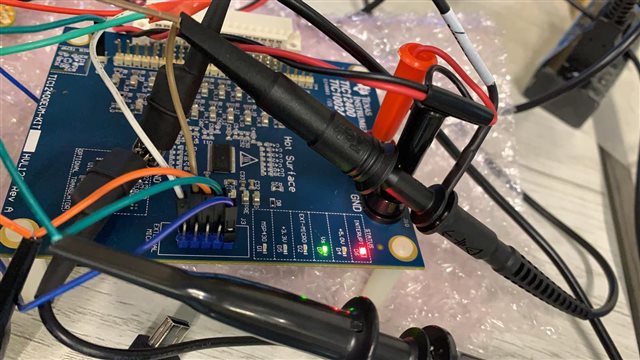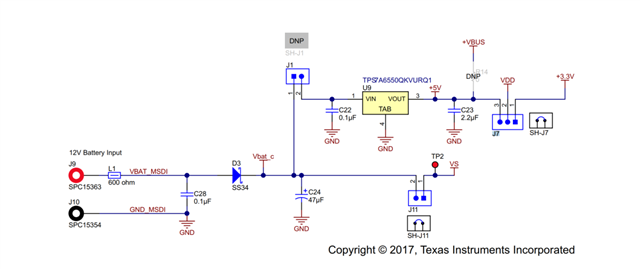Other Parts Discussed in Thread: TIC12400, TXB0106, TIC12400-Q1
Hi
I am new with MSDI & trying to interface TIC12400Q1 EVM SPI Communication with External Microcontroller(NXP: S32K118)
So i am transmitting 0x02000000 (DEVICE_ID) and trying to read but i am Receiving 0xe0000003 (POR, SPI FAIL, PARITY FAIL).
With GUI everything working fine bit with external microcontroller i am not able to read even the SPI.
Is there any specific Jumper setting i am missing?
For connection i am referring below mention link.


